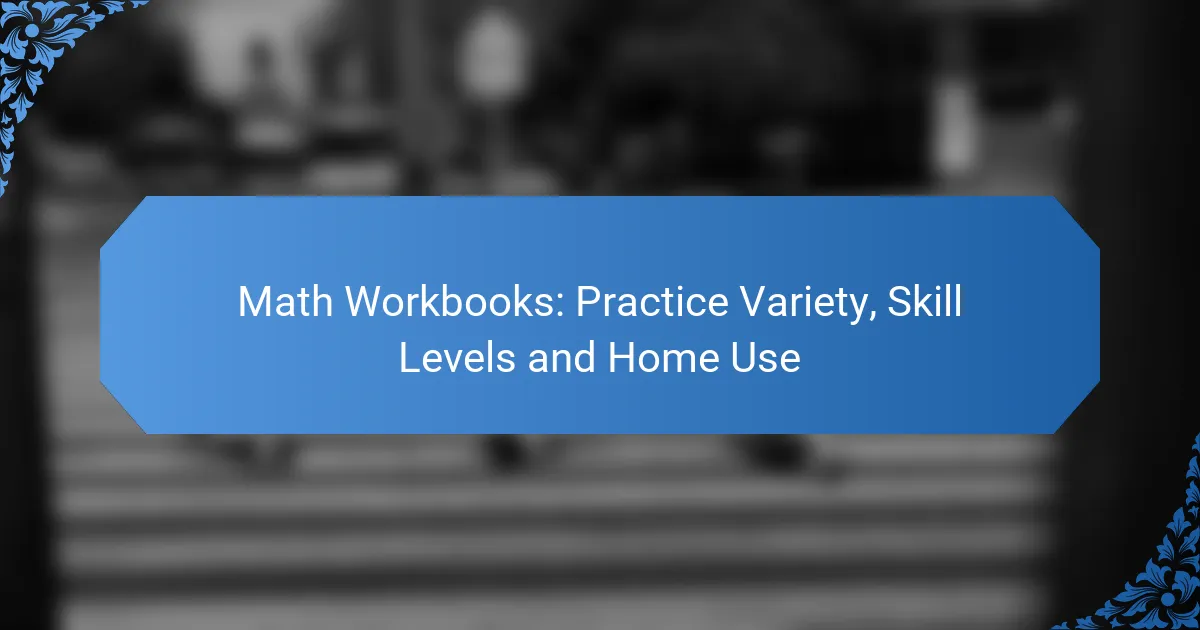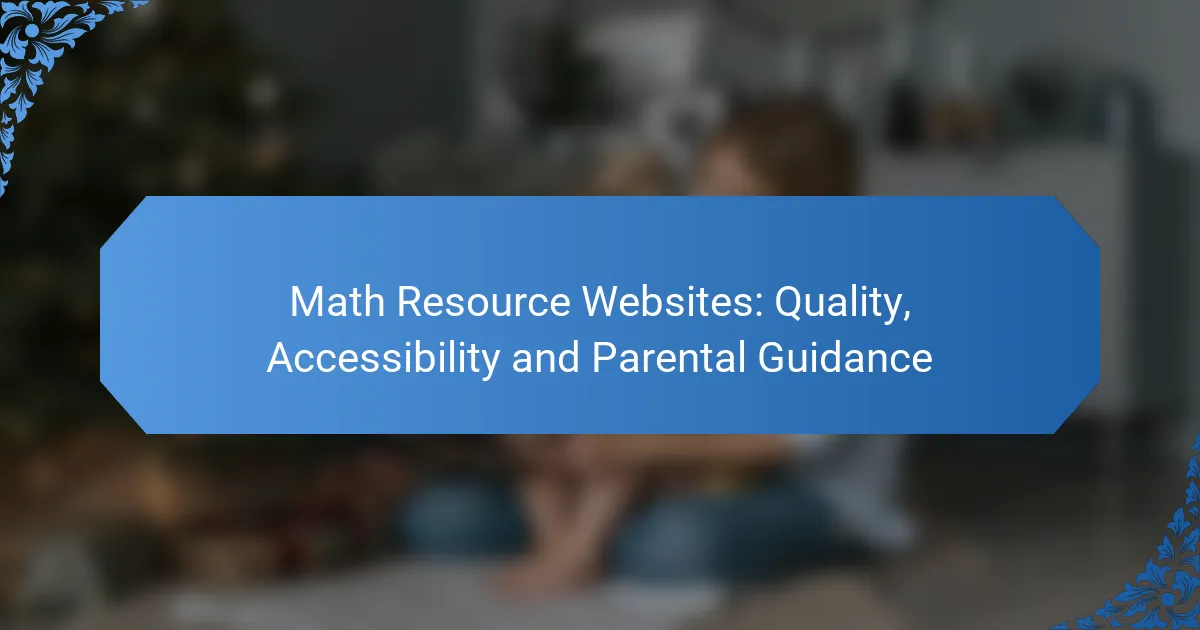Math workbooks designed for home use are essential tools that accommodate different skill levels while offering a variety of practice problems. These resources are engaging and structured, allowing learners to progress at their own pace while reinforcing key concepts aligned with educational standards. By focusing on diverse types of exercises, such as problem-solving and test preparation, these workbooks support a comprehensive understanding of mathematics.

What Are the Best Math Workbooks for Home Use?
The best math workbooks for home use are those that cater to varying skill levels and provide a diverse range of practice problems. They should be engaging, easy to follow, and aligned with educational standards to effectively support learning at home.
Math Mammoth
Math Mammoth offers a comprehensive approach to math education, focusing on mastery and understanding of concepts. The workbooks are divided by grade level and cover essential topics in depth, making them suitable for students who need additional practice or a solid foundation.
Each workbook includes clear explanations, practice problems, and review sections. Parents appreciate the straightforward layout, which allows for easy tracking of progress and understanding.
Singapore Math
Singapore Math is renowned for its emphasis on problem-solving and critical thinking. The workbooks are structured to build a strong conceptual understanding of mathematics through visual aids and real-world applications.
These materials are particularly effective for students who thrive on logical reasoning and abstract thinking. They often include a mix of exercises that challenge students to apply their knowledge in various contexts.
Beast Academy
Beast Academy combines engaging comic-style lessons with rigorous math practice, making it appealing to younger learners. The program is designed for advanced students, offering challenging problems that promote deep thinking and creativity.
Parents can expect a unique blend of fun and educational content, which helps maintain interest while reinforcing mathematical concepts. The workbooks are structured to encourage exploration and discovery in math.
Scholastic Math Workbooks
Scholastic Math Workbooks provide a wide range of topics and activities suitable for various grade levels. These workbooks are often aligned with national standards and include a variety of exercises, from basic skills to more complex problem-solving tasks.
The format is user-friendly, making it easy for parents to guide their children through the material. Additionally, the workbooks often feature assessments to help track progress and identify areas needing improvement.
Big Ideas Math
Big Ideas Math focuses on conceptual understanding and real-world applications. The workbooks are designed to engage students through interactive lessons and a variety of practice problems that reinforce learning.
These materials are beneficial for students who need to connect mathematical concepts to everyday situations. The structured approach helps build confidence and competence in math skills over time.
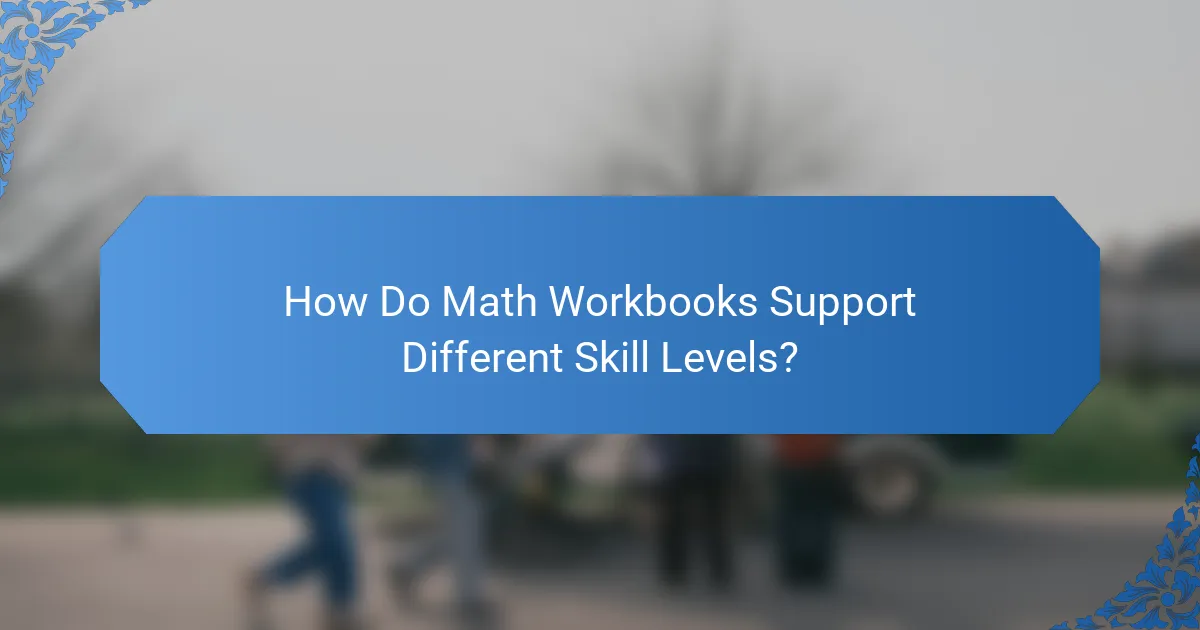
How Do Math Workbooks Support Different Skill Levels?
Math workbooks are designed to cater to various skill levels, ensuring that learners can practice and build their abilities effectively. They provide structured exercises that align with the learner’s current understanding, making it easier to progress at a comfortable pace.
Beginner Level Workbooks
Beginner level workbooks focus on foundational concepts such as basic addition, subtraction, and simple geometry. These workbooks often include colorful illustrations and engaging activities to maintain interest and motivate young learners.
When selecting beginner workbooks, look for those that offer a variety of exercises, including matching, fill-in-the-blank, and simple word problems. This variety helps reinforce learning through different formats and keeps practice sessions enjoyable.
Intermediate Level Workbooks
Intermediate level workbooks introduce more complex topics such as multiplication, division, fractions, and basic algebra. They are designed to challenge students while still providing ample support through guided examples and practice problems.
Choose workbooks that include step-by-step explanations and progressively challenging exercises. Incorporating real-life applications, such as word problems related to shopping or cooking, can enhance understanding and make math more relatable.
Advanced Level Workbooks
Advanced level workbooks cover higher-level concepts such as advanced algebra, geometry, and introductory calculus. These workbooks are intended for students who are ready to tackle more challenging material and often include problem-solving strategies and critical thinking exercises.
When selecting advanced workbooks, prioritize those that offer a mix of theoretical explanations and practical problems. Look for resources that prepare students for standardized tests or advanced coursework, ensuring they are equipped for future academic challenges.
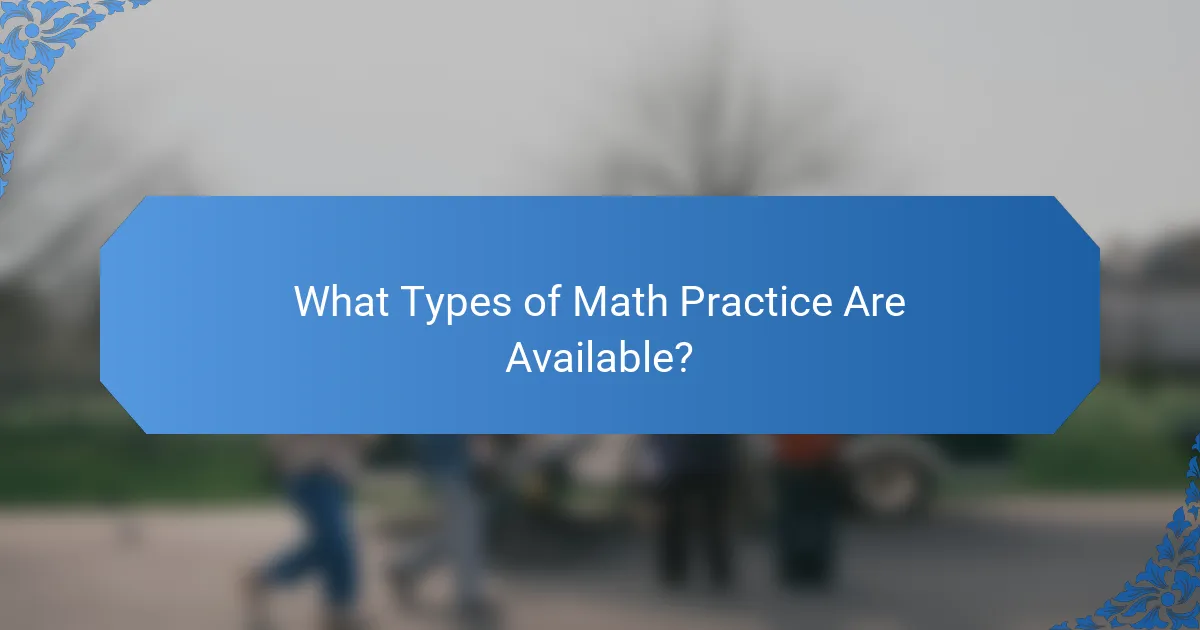
What Types of Math Practice Are Available?
Math practice can be categorized into several types, each focusing on different skills and learning objectives. Common types include problem-solving workbooks, conceptual understanding workbooks, and test preparation workbooks, which cater to various learning needs and goals.
Problem-Solving Workbooks
Problem-solving workbooks emphasize critical thinking and the application of mathematical concepts to real-world scenarios. These workbooks often include a variety of problems that require students to analyze, strategize, and find solutions, fostering deeper understanding and retention.
When selecting a problem-solving workbook, look for those that offer a range of difficulty levels to match the student’s capabilities. It’s beneficial to choose workbooks that provide step-by-step solutions or explanations to help students learn from their mistakes.
Conceptual Understanding Workbooks
Conceptual understanding workbooks focus on the underlying principles of mathematics rather than rote memorization. These materials help students grasp key concepts, such as number sense, operations, and relationships between mathematical ideas.
Choose workbooks that incorporate visual aids, such as diagrams and models, to enhance comprehension. Engaging activities that connect math to everyday life can also make learning more relatable and enjoyable.
Test Preparation Workbooks
Test preparation workbooks are designed to help students prepare for standardized tests or assessments. These workbooks typically include practice questions that mirror the format and content of actual exams, allowing students to familiarize themselves with the testing environment.
When selecting a test preparation workbook, ensure it aligns with the specific test being taken, such as state assessments or national exams. It’s helpful to include timed practice sessions to build confidence and improve time management skills during the actual test.
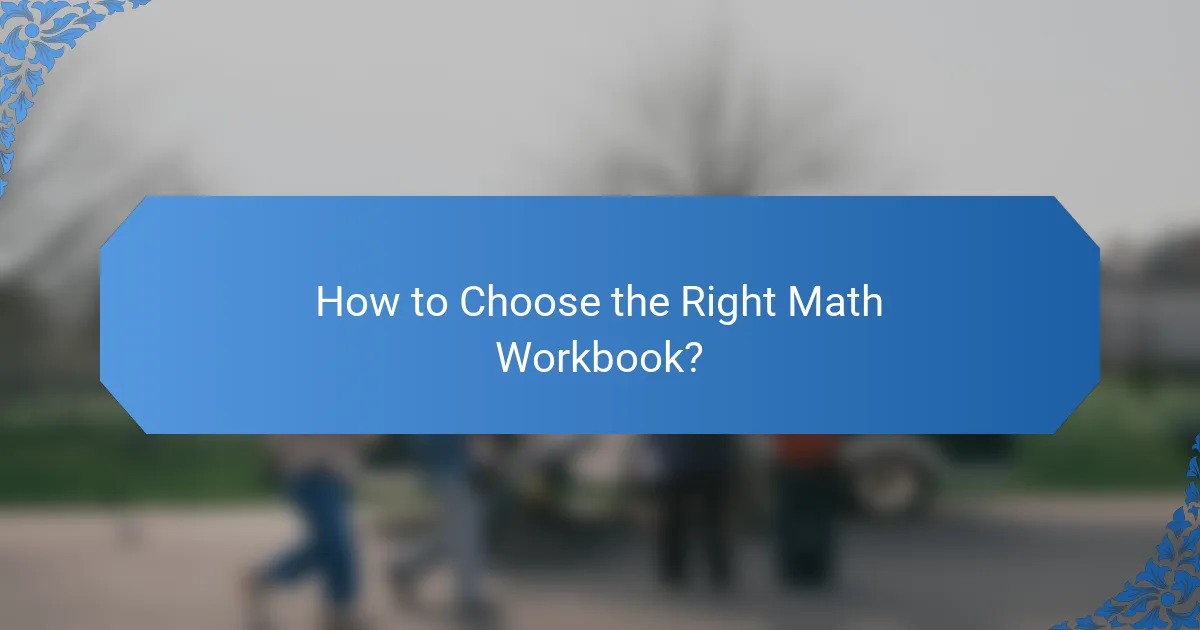
How to Choose the Right Math Workbook?
Selecting the right math workbook involves understanding your child’s learning goals, the format of the workbook, and the credibility of the publisher. A well-chosen workbook can enhance skills and make learning enjoyable.
Assessing Learning Goals
Begin by identifying the specific math skills your child needs to develop, such as addition, subtraction, or problem-solving. Consider their current grade level and any areas where they struggle or excel.
Set clear objectives, whether it’s improving basic arithmetic or preparing for standardized tests. Tailor your choice to these goals to ensure the workbook aligns with your child’s educational needs.
Evaluating Workbook Formats
Math workbooks come in various formats, including traditional print, digital, and interactive options. Consider your child’s learning style; some may benefit from hands-on activities, while others might prefer straightforward exercises.
Look for features like answer keys, progress tracking, and engaging illustrations. A workbook that includes a mix of practice problems, games, and real-life applications can keep your child motivated.
Comparing Publisher Credibility
Research the publishers of the workbooks you are considering. Established publishers often have a reputation for quality and adherence to educational standards. Look for reviews or recommendations from teachers and parents.
Check if the workbook aligns with local educational standards, such as the Common Core in the United States or similar frameworks in other countries. A credible publisher will provide materials that effectively support your child’s learning journey.

What Are the Benefits of Using Math Workbooks?
Math workbooks provide structured practice that enhances understanding and retention of mathematical concepts. They cater to various skill levels, making them suitable for learners from elementary to advanced stages.
Practice Variety
Math workbooks offer a diverse range of problems, including multiple-choice questions, word problems, and puzzles. This variety keeps learners engaged and helps them apply concepts in different contexts. For instance, a workbook might include exercises on basic addition, followed by real-life scenarios that require addition skills.
Skill Levels
These workbooks are designed to accommodate different skill levels, from beginners to advanced students. Many publishers categorize their materials by grade or difficulty, allowing parents and educators to select appropriate resources. For example, a workbook for first graders might focus on simple addition and subtraction, while one for fifth graders could cover fractions and decimals.
Home Use
Using math workbooks at home can reinforce classroom learning and provide extra practice. They are particularly useful for parents who want to support their children’s education outside of school hours. Setting aside regular time for workbook exercises can help establish a productive routine, making math practice a consistent part of learning.
